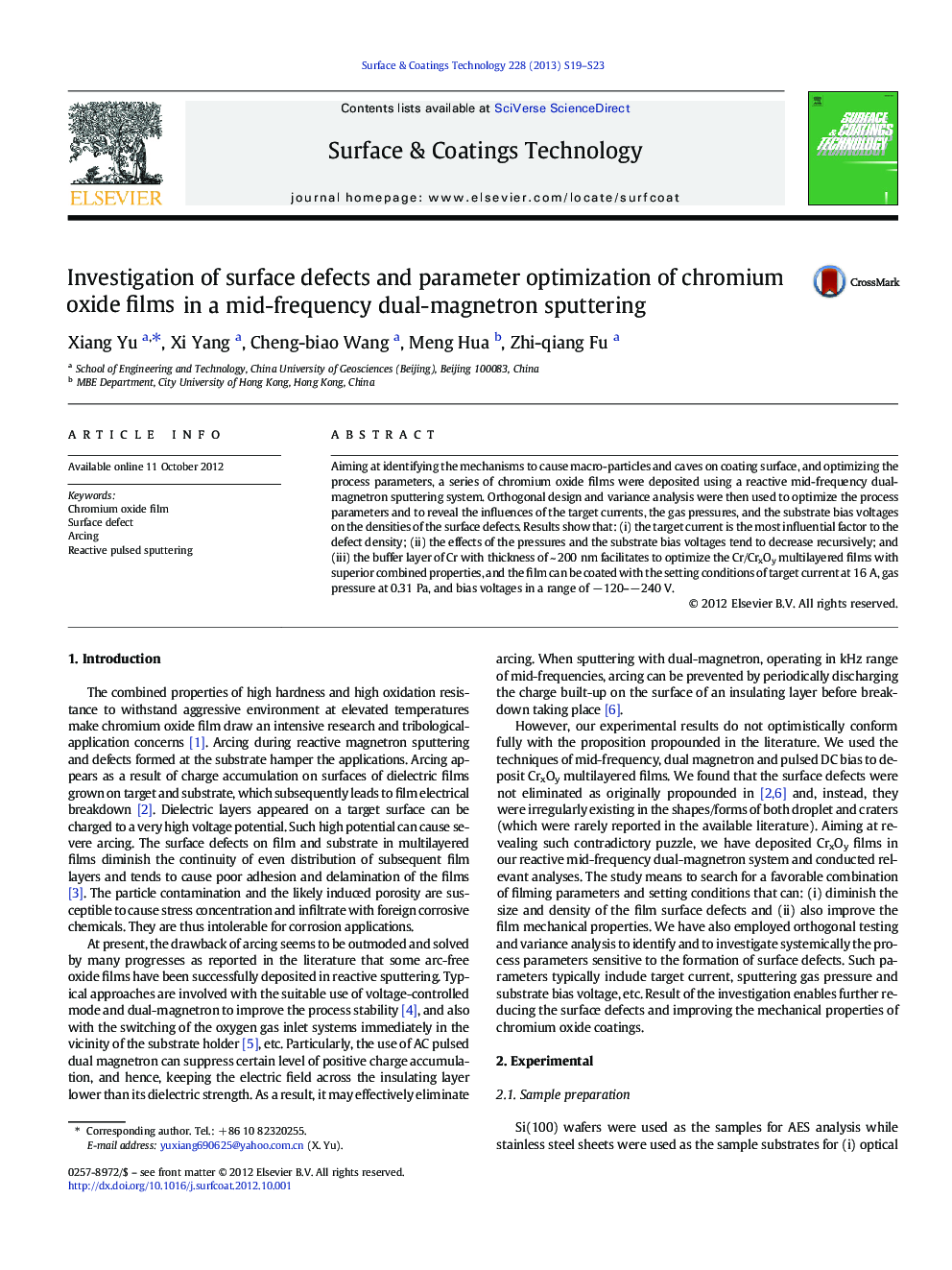| Article ID | Journal | Published Year | Pages | File Type |
|---|---|---|---|---|
| 1657787 | Surface and Coatings Technology | 2013 | 5 Pages |
Aiming at identifying the mechanisms to cause macro-particles and caves on coating surface, and optimizing the process parameters, a series of chromium oxide films were deposited using a reactive mid-frequency dual-magnetron sputtering system. Orthogonal design and variance analysis were then used to optimize the process parameters and to reveal the influences of the target currents, the gas pressures, and the substrate bias voltages on the densities of the surface defects. Results show that: (i) the target current is the most influential factor to the defect density; (ii) the effects of the pressures and the substrate bias voltages tend to decrease recursively; and (iii) the buffer layer of Cr with thickness of ~ 200 nm facilitates to optimize the Cr/CrxOy multilayered films with superior combined properties, and the film can be coated with the setting conditions of target current at 16 A, gas pressure at 0.31 Pa, and bias voltages in a range of − 120–− 240 V.
► Chromium oxide films were deposited in a mid-frequency dual-magnetron sputtering. ► Forming mechanism of their droplets and caves was analyzed. ► Orthogonal design and variance analysis were used to discuss the influences. ► Parameter combination was analyzed and then optimized.
